2022 Chevrolet Bolt EUV First Drive Review - An Affordable Electric Makeover
The Chevrolet Bolt EV has long been the electric car that automotive writers will tell you to buy when you ask them for advice, even though they know you probably won't, but perhaps the 2022 Bolt EUV will prove more convincing. Now in a fashionable crossover body-style, and with aggressive pricing along with freshly-available tech like Super Cruise, Chevrolet has taken maximum advantage of a familiar platform to set what's arguably the new benchmark in a growing segment.
Though the pictures make it look otherwise, in the metal the Bolt EUV and the new Bolt EV are actually very similar. Despite the crossover positioning, the EUV is only 5mm wider and higher than the hatchback; both get the squinting new headlamps, faintly reminiscent of the eyes on Iron-Man's helmet, and the kicked-up shoulder line.
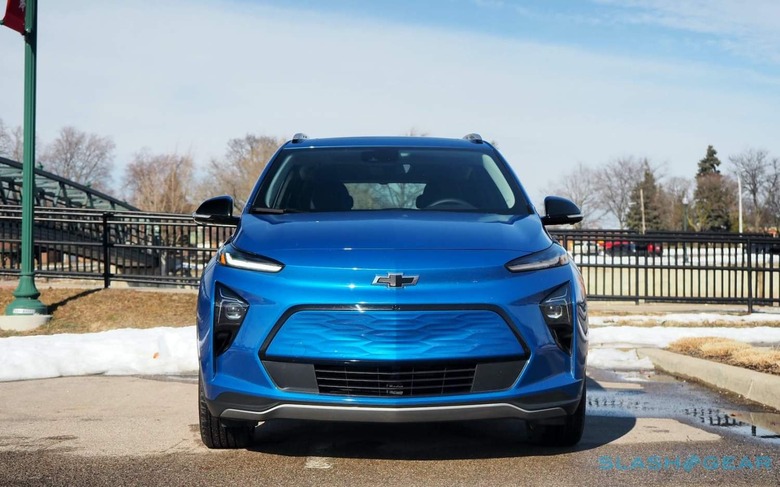
At the rear, the primary oddity is the location of the brake lights: they're down low in the bumper, rather than in the main LED clusters. A panoramic glass sunroof is optional, while 17-inch alloy wheels – on firmly-tuned suspension – are standard.
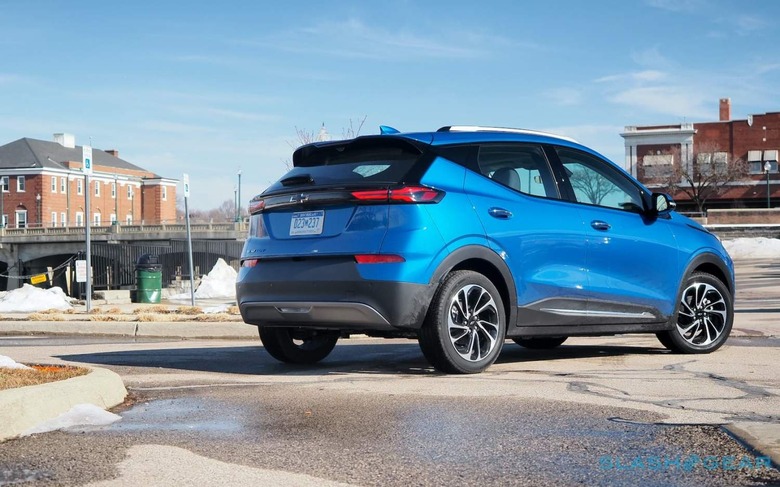
In some ways, the 2022 Bolt EUV feels like a wish-list of long time Bolt EV fans made real. Owners liked the one-pedal driving mode, which can rapidly slow the car to a complete stop without you touching the brake, but disliked that you needed to enable it each time you started the Bolt EV up. Chevrolet has fixed that with a dedicated button for that mode, and the car now remembers your setting even after you switch it off and on again.
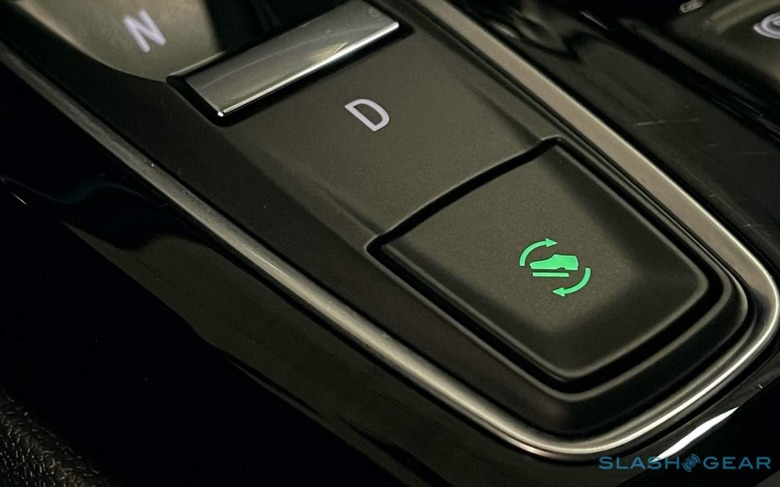
Similarly, Bolt EV owners wanted more rear seat space, and so the majority of the Bolt EUV's size increase goes there. The car is about 6-inches longer overall, with half of that adding legroom for the second row. It leaves it feeling much more welcoming to those with longer legs, even if the regular 2022 Bolt EV actually has very slightly more headroom, shoulder room, and hip room. Even the trunk on the hatchback is very slightly larger, surprisingly, though by less than a cubic foot. The Bolt EUV offers a usable 16.3 cu-ft with the rear seats up, and 56.9 cu-ft with them down.
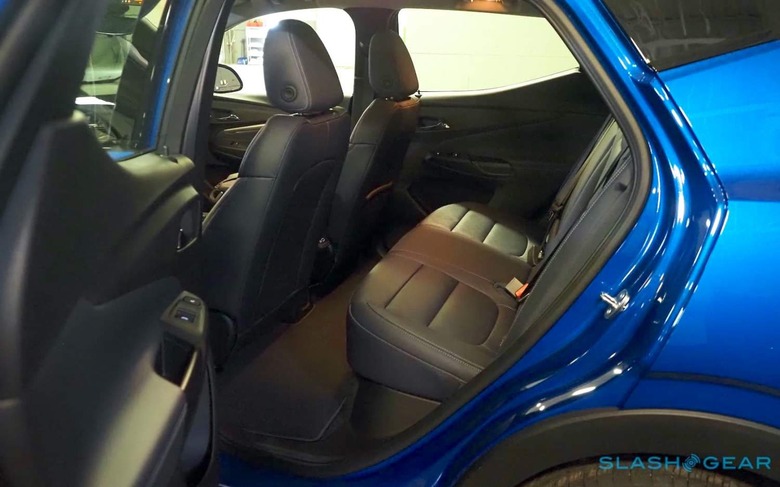
The other big request was around power, and now the Bolt EUV comes with 11 kW DC fast charging support as standard. Chevrolet also throws in a 7 kW dual-mode charger, capable of working with a regular 120V outlet (adding around 4 miles of range in an hour) or a 240V outlet with an adapter that can give you a full charge in around 7 hours. Find a DC fast charger, and 30 minutes plugged in will add up to 95 miles of range.
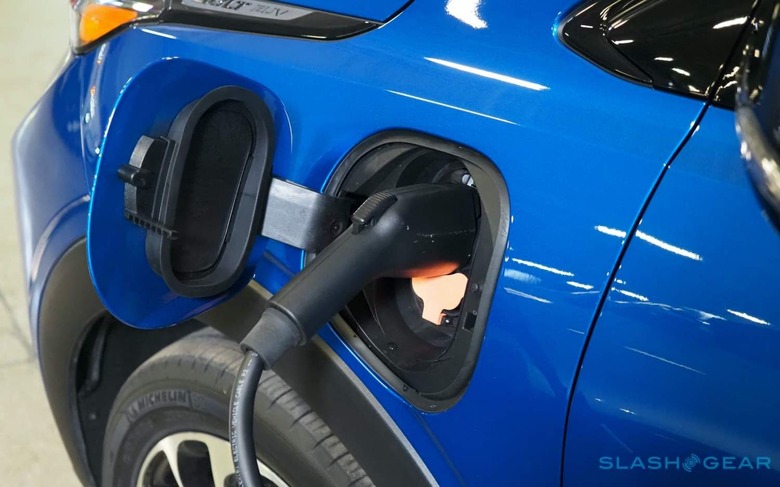
What you don't get – can't get, in fact – is all-wheel drive. Like the 2022 Bolt EV, the EUV is only available with front-wheel drive, using a single electric motor. It may look more like, and be positioned by Chevy more like, a crossover, but it's not going to fare better in the ice or snow, or in mud, than the hatchback might.
Chevrolet's argument is that "crossover" can reflect a body shape and practicality promise, just as much as it might imply different traction abilities. The reality is that the cost of reengineering the Bolt platform for that second rear motor is just too great, given GM's next-generation Ultium EV architecture is the new focus. And, it's not like the FWD Bolt EV is necessarily bad in the snow: an EV on winter tires, even without power going to all four wheels, can perform considerably better than a gas-engined car with the same conditions.
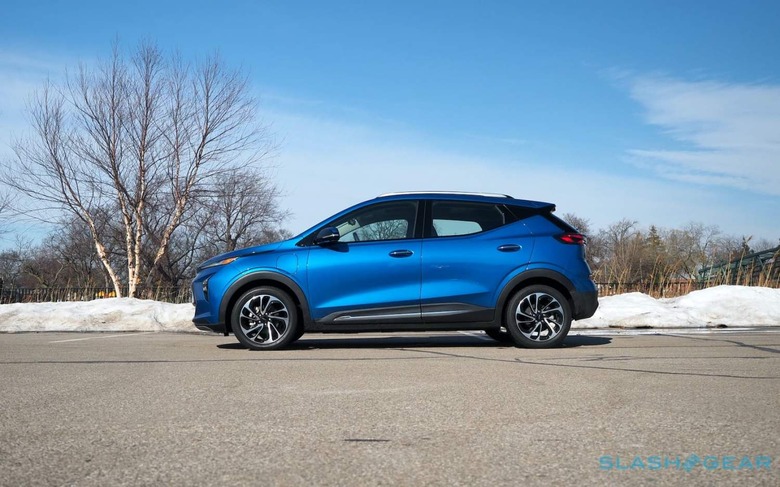
Still, I suspect it'll limit sales in some regions of the country. Particularly as Chevrolet's competition typically offer all-wheel drive as an option, even if it'll cost you extra.
On the road, the 2022 Bolt EUV feels much like a Bolt EV did before. You still get 200 horsepower and 266 lb-ft of torque, and the crossover EV feels nimble and eager. No, it's not the fastest compact electric car out there, but the instantaneous power when you graze the accelerator makes zipping away from stop signs and traffic lights far swifter than most internal combustion cars. Press the Sport mode button and things get even perkier.
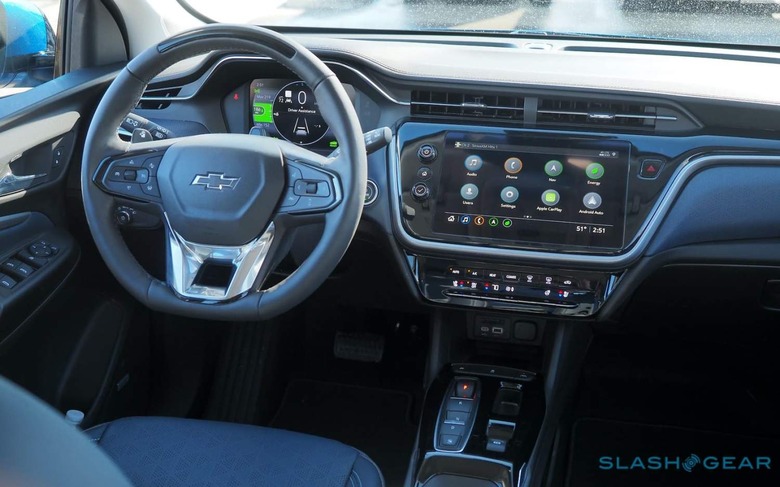
As before, hitting the power hard can leave the steering a little squirrely as the Bolt EUV struggles to effectively put down everything through the front wheels alone. The electric grunt isn't just usable in urban settings, either, with highway-speed overtaking no problem. Chevy has usefully enlarged the regen paddle on the steering wheel, too: pull that and even if you're not in the one-pedal mode you'll get much more electric motor braking, and it can bring the Bolt EUV to a standstill if you keep hold of it long enough.
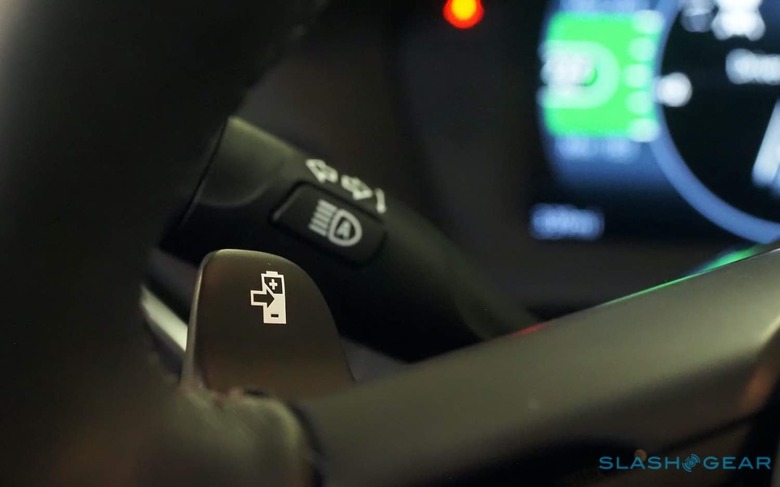
It's part of a cabin redesign that's also welcome. Some of the trim pieces in these early pre-production cars were final, but the general feel overall was of a higher-quality, cleaner and more mature design than the interior of the old Bolt EV. The driver still gets a decent-sized screen to show speed, power, and other details, controlled with easy-to-use buttons on the steering wheel, while a 10.2-inch touchscreen in the center stack runs GM's latest infotainment software.
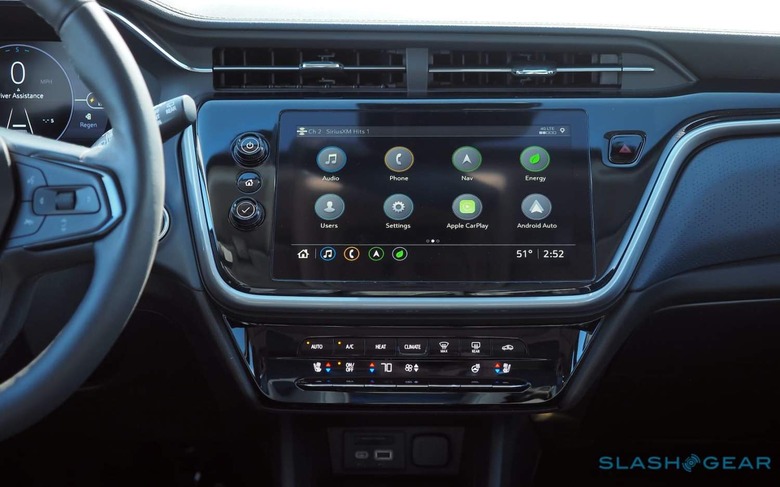
That supports Apple CarPlay and Android Auto, both connecting wirelessly, and there's a wireless phone charging pad below. Switching to a push-button transmission selector and redesigning the center console makes for more usable storage space, too.
One new button on the wheel is for GM's Super Cruise, the Bolt EUV being the first model outside of select Cadillac cars and SUVs to offer the hands-free driver assistance system. It'll be standard on the limited-production 2022 Bolt EUV Launch Edition ($43,495) or a $2,200 option on the Premier trim (starting at $38,495) that also adds things like leather seats, a 360-degree camera, rear camera mirror, and standard adaptive cruise control.
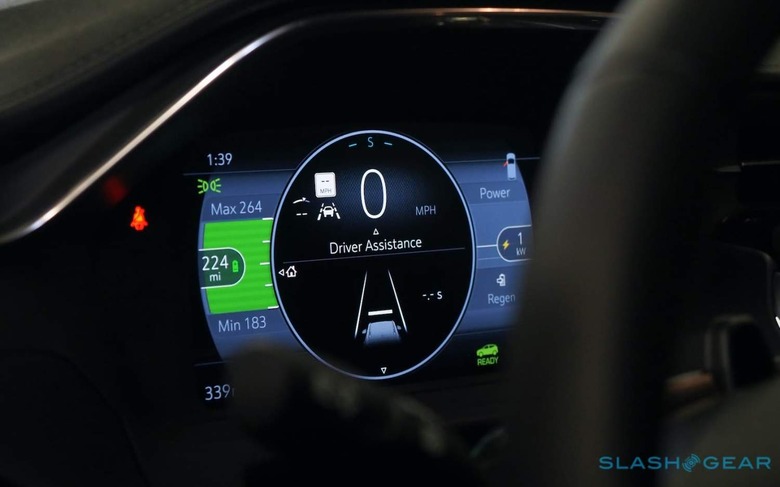
It's worth noting that this is "regular" Super Cruise, not the "enhanced" version that we've reviewed on the new Cadillac Escalade. That means it'll keep pace with traffic in the lane ahead, keep you centered in your lane, and do so without demanding you keep your hands on the wheel, but it can't do the automatic lane-change maneuvers. Unfortunately, just as Cadillac CT6 owners discovered to their ire, that's a limitation of the architecture of the car: the Bolt EUV platform simply can't support those more advanced features.
Even so, there's a lot to like about Super Cruise. The ability to, well, cruise down the highway as its attention-monitoring camera makes sure you're sufficiently engaged feels like a game-changer, even if you're familiar with regular adaptive cruise control. The experience takes a few miles of getting used to, as you learn to trust its capabilities, but it definitely feels more comfortable than most hands-on systems.
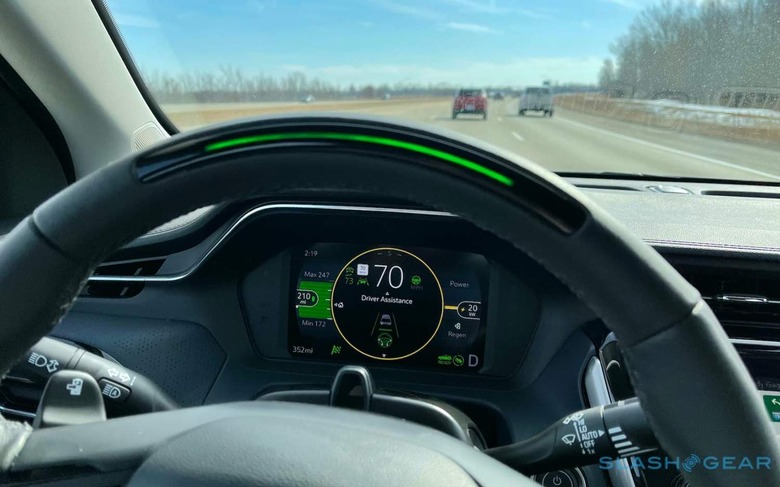
Chevy's engineers tell me that, even without the "enhanced" version, Bolt EUV owners will get the more refined, natural driving experience that Super Cruise has polished over years of iterations. With strong crosswinds on my test drive, however, it was difficult to tell; still, that did show just how capably Super Cruise kept me in the lane, even with its adjustments necessary to keep the 3,679 pound crossover centered.
There were a couple of times the system took a little longer to allow me to enable it, since I needed to make sure the Bolt EUV was already centered in the lane first, but only one point where the status light bar built into the steering wheel flickered red to have me lend a hand because of the wind conditions. Otherwise, aside from complex junctions where Super Cruise doesn't know where you need to go and so will revert to manual control, it held up just fine – as long as you're on the roughly 200,000 miles of pre-mapped highway it's intended to work on.
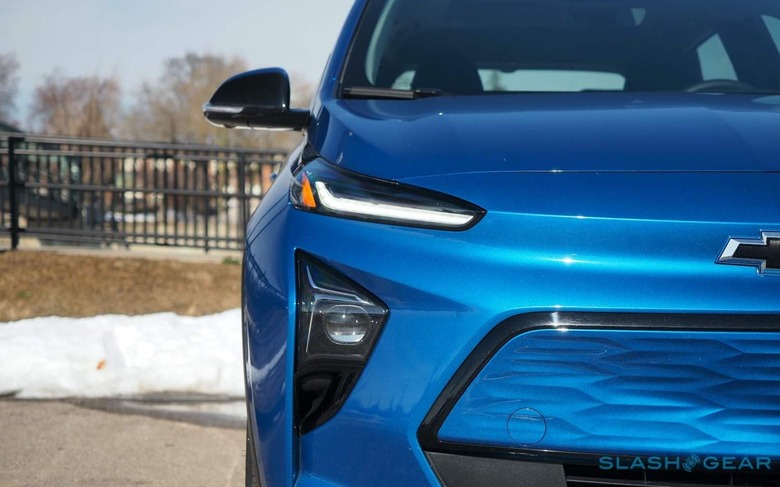
Super Cruise isn't a cheap option, but I still think most Bolt EUV buyers should strongly consider it. You get three years of service – including quarterly map updates delivered via OnStar – and then after that it'll be a monthly subscription. Chevrolet hasn't decided how much that'll be yet (for Cadillac owners it's $25/mo, or a $15/mo extra on certain OnStar packages, with no minimum contract) and I'm told there's also consideration being given to one-time purchases, such as if you wanted Super Cruise for a month so as to cover a road trip or vacation.
As for range, the 250 miles that the Bolt EUV expects as its EPA rating is 9 miles short compared to the smaller, lighter Bolt EV, but neither figure is anything to be ashamed of. With these being early preproduction cars I didn't do any specific range testing as both software and hardware could still change, but over 64 miles of driving the car's range estimate had dropped 69 miles. That's with no consideration given to driving frugally over a combination of highway and urban use, and despite my experimenting with Sport mode and fighting those not-insignificant highway crosswinds.
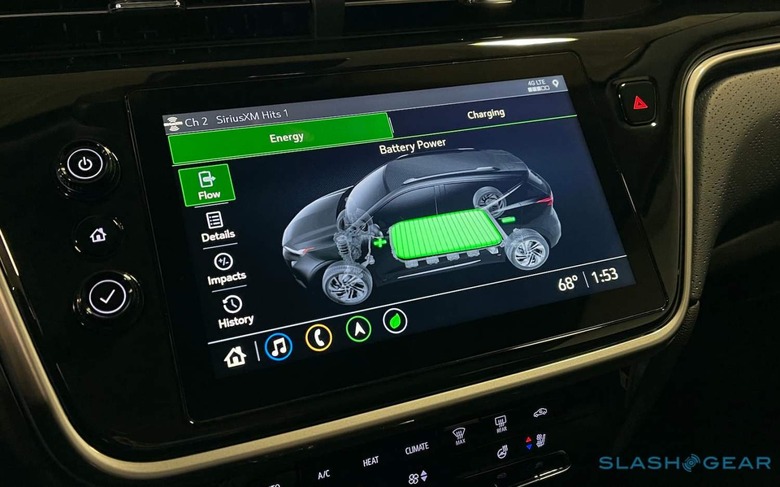
For most people, then, the Bolt EUV (and indeed the 2022 Bolt EV) will do just fine for their everyday use. Chevrolet is also throwing in installation of a 240V outlet for new owners (assuming your home electric system isn't too old or unusual) which, along with the dual-mode charger, should mean keeping the car topped up at home isn't an issue. I'm disappointed not to see a 120V power outlet anywhere, though you do get several USB (Type-A and Type-C) and a 12V socket.
As for charging on the move, there you're still at the mercy of public infrastructure. It's the problem all EVs – bar Tesla's – face, though the situation has certainly improved since the first-generation Bolt EV launched in late 2016. The myChevrolet app will show public charger locations and, in many cases, live availability, and can help map a route with charging stops included and even handle paying for the recharge across certain networks like ChargePoint and EVgo.
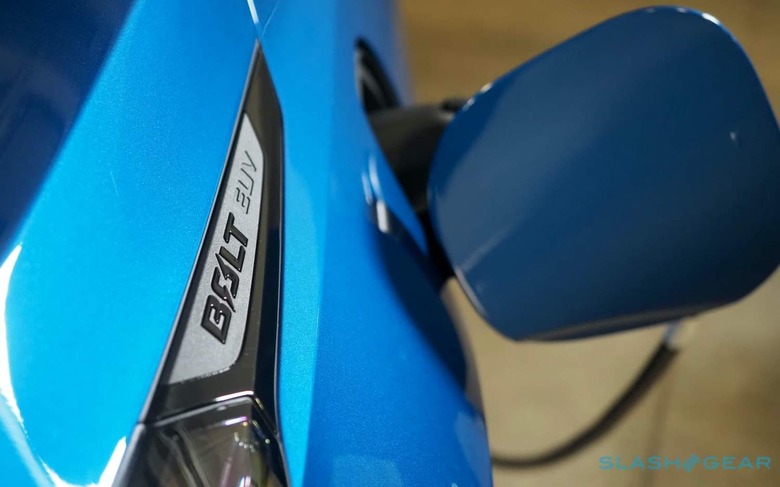
Chevrolet's other challenge is the absence of the US federal tax credit. With GM having sold its way through its allowance already, it means Bolt EUV buyers will only get state and local incentives, rather than the potential $7,500 of credits many rival EVs still enjoy.
Even with those constraints in mind, the new compact electric crossover is competitively priced. A base-spec Bolt EUV LT – at $33,995 including destination – is about the same as a front-wheel drive 2022 VW ID.4 Pro after the federal tax credit. A Tesla Model 3 Standard Range Plus is $38,190 (including destination; Tesla has also sold so many EVs that it doesn't qualify for that federal incentive any more) for about the same range as the Chevy, though better performance and more brand cachet.
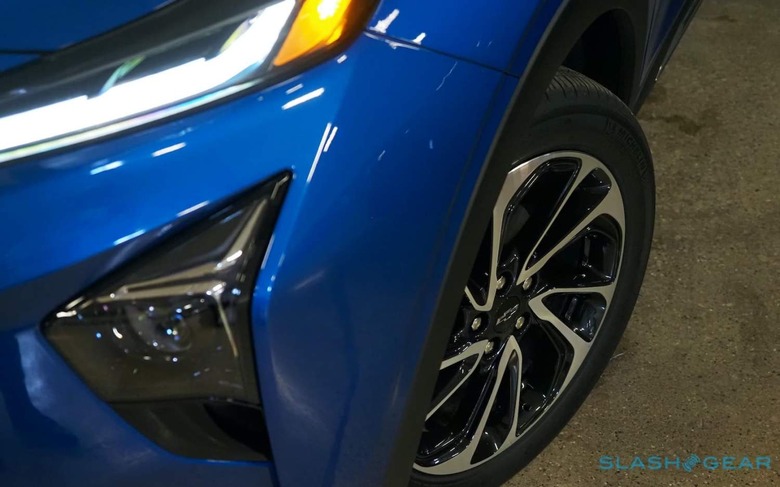
A better comparison is probably Hyundai's Kona Electric, from $38,565 before the federal incentive, for the same range as the Bolt EUV though less standard tech. A Nissan Leaf S Plus with the 62 kWh battery is $39,220 before the incentive, but still falls 24 miles short of the Chevrolet in range.
Certainly, you could argue that the 2022 Bolt EUV doesn't quite go far enough. An AWD option would be nice, as would Super Cruise being available on the base trim, and the reality is that the extra space promised is really just in rear legroom. More significant steps forward will just have to wait until GM Ultium is ready, but it's difficult to imagine that the automaker will be able to price EVs based on that new platform quite as aggressively as with this cunning massage of a tried-and-tested architecture.
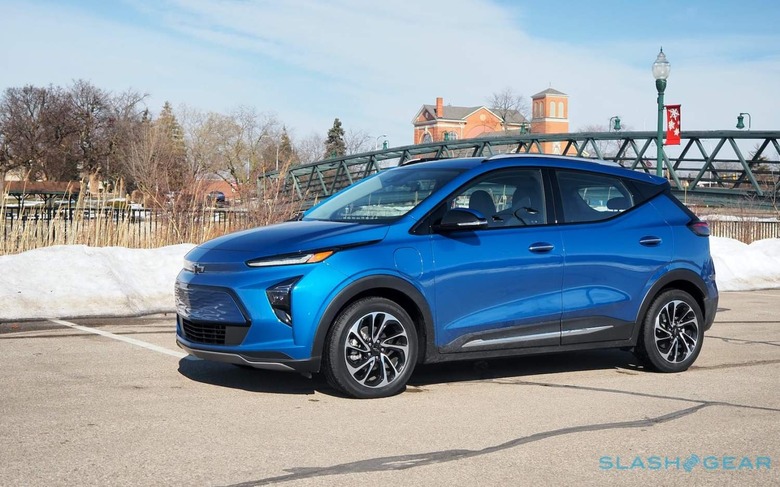
Seldom is the reality of compromise so abundantly clear. On balance, there's more to like about the 2022 Bolt EUV than there is to criticize: if it's a stopgap until Ultium can be made as cost-efficient for Chevrolet's bread & butter models then it's one which is charmingly spritely, pleasingly designed and practical, and generally does a solid job of not rubbing that fact in your face. Indeed the biggest value challenge might well, ironically, be... the 2022 Bolt EV, even if that can't be had with Super Cruise and makes optional some of the crossover's standard features. All the same, on a dollar-per-electric-mile basis, it's hard to do better than these close Chevy siblings.
